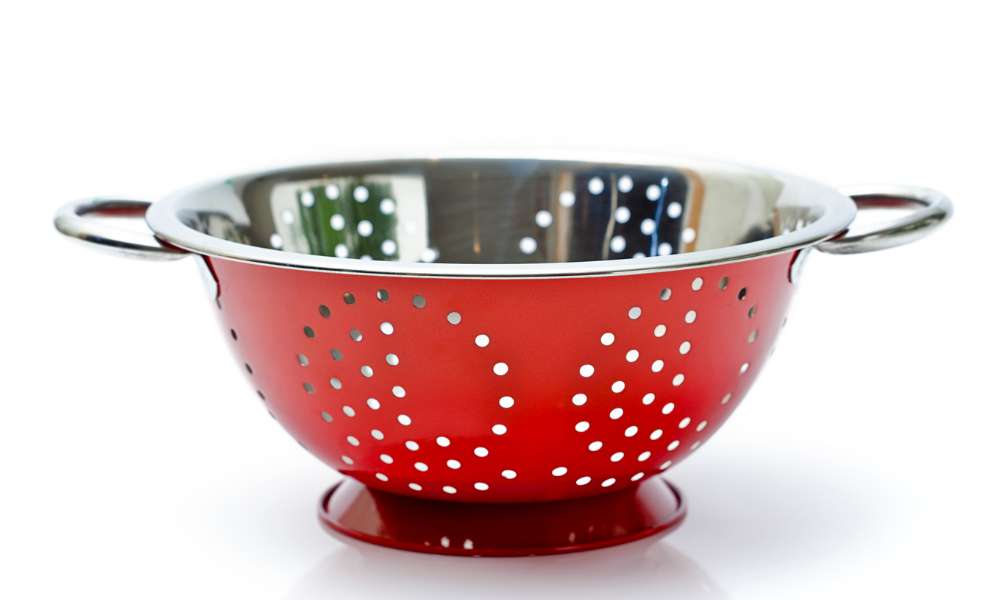A colander is an essential kitchen tool often overlooked but vital for a variety of culinary tasks. This perforated bowl-shaped utensil is designed to drain water from foods such as pasta, washed vegetables, or rice. Its unique design, featuring numerous holes of varying sizes, allows liquid to pass through while retaining the solids inside. With a construction that can range from metal to plastic, each colander is built to withstand the rigors of daily use, making it an indispensable item in the preparation of meals. Whether you’re rinsing fresh produce or straining boiling hot noodles, a colander simplifies these processes, ensuring efficiency and safety in the kitchen.
Can I Use A Colander As A Steamer?
Indeed, a colander can be repurposed as a makeshift steamer, showcasing its versatility beyond its primary function. To utilize a colander as a steamer, one simply needs to place it over a pot of boiling water, ensuring that the bottom does not touch the water. Covering this setup with a lid traps the steam, which cooks the food placed inside the colander. This method works effectively for steaming vegetables, seafood, and even small portions of meat. It’s a testament to the colander’s adaptability in the kitchen, allowing cooks to steam food without the need for specialized equipment. However, it’s crucial to monitor the water level in the pot to prevent it from evaporating completely and to ensure that the lid fits snugly to maximize steam retention.
The History Of Colanders
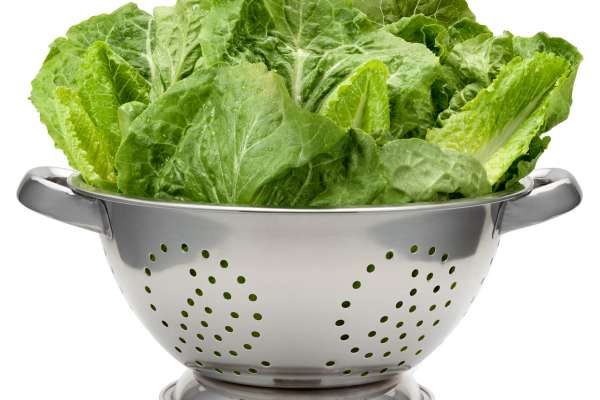
The history of colanders stretches back to ancient civilizations, where the earliest versions were likely made from reeds or other natural materials. These primary colanders were used for straining liquids from food or for sifting grains. As societies advanced, so did the materials and designs of colander. The Romans, known for their innovations in kitchen utensils, crafted colanders Clean from bronze and silver, featuring intricate designs that served both functional and decorative purposes. Through the Middle Ages and into the Renaissance, colander evolved to include those made of metals such as copper and tin. The 19th and 20th centuries saw the introduction of stainless steel and plastic colanders, which offered durability and ease of cleaning. Today, colander come in a variety of materials, sizes, and colors, reflecting their enduring importance in cooking and food preparation across cultures and time periods.
Types Of Colanders
1. Metal Colanders
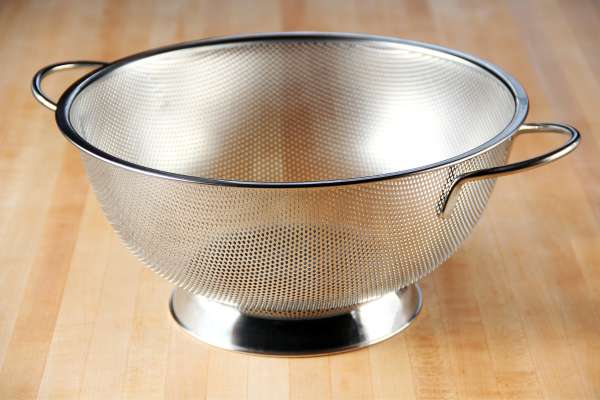
Metal colanders are renowned for their durability and robustness, making them a staple in many kitchens. Often crafted from stainless steel, these colanders can withstand high temperatures and resist rust, ensuring a long lifespan. They’re ideal for heavy-duty tasks such as draining boiling pasta or washing large quantities of vegetables. Their sturdy construction also means they can handle heavier foods without bending or warping. However, they can be heavier than other types, which might be a consideration for some users.
2. Plastic Colanders
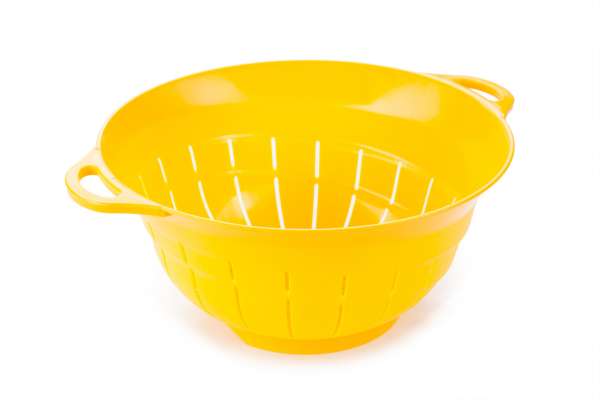
Plastic colanders are lightweight and often more affordable than their metal counterparts. They come in a variety of colors, adding a touch of style to the kitchen. While plastic colanders are versatile and easy to handle, it’s important to choose ones that are BPA-free to avoid potential chemical leaching. They’re suitable for rinsing fruits, vegetables, and draining pasta. However, they may not withstand boiling water as well as metal or silicone colanders and can become stained over time from certain foods.
3. Silicone Colanders
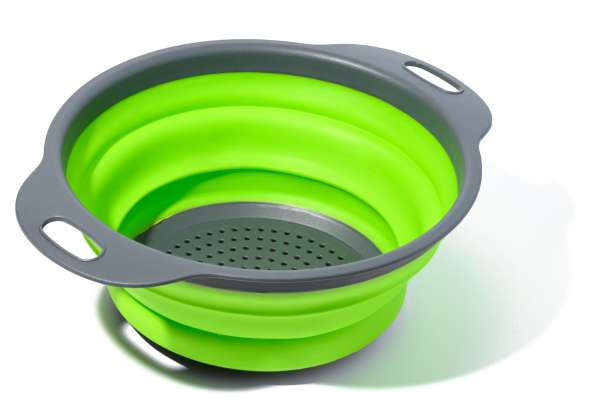
Silicone colanders offer a modern twist on traditional designs, featuring flexibility, heat resistance, and a non-stick surface. They can typically withstand extreme temperatures, making them safe for use in boiling water and dishwashers. Their collapsible designs are a significant advantage for storage in tight spaces. Silicone colanders are gentle on delicate foods and can be used for a variety of tasks, from straining tea leaves to rinsing quinoa. They are an excellent choice for those looking for a durable, easy-to-store, and versatile colander.
How To Choose The Right Colander
1. Size And Capacity
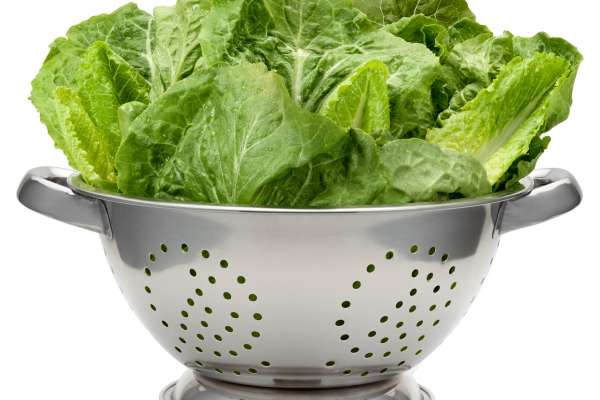
The size and capacity of a colander are crucial, especially depending on the volume of food you typically prepare. For those who frequently cook for large groups or prepare meals in bulk, opting for a larger colander is advisable. It provides ample space for tasks like draining pasta for a family meal or washing a sizable amount of vegetables. Conversely, if kitchen space is limited or you usually cook for one or two people, a smaller colander can save space while still being perfectly adequate for your needs. Remember, a colander with a wide base tends to be more stable and can handle more food at once without tipping over.
2. Material

The material of a colander not only affects its durability and longevity but also its versatility and ease of use. Here’s a brief overview:
- Metal Colanders: Ideal for those seeking durability and heat resistance. Stainless steel colanders are especially resistant to rust and can handle high temperatures, making them suitable for a wide range of tasks, including draining hot foods and sterilizing.
- Plastic Colanders: Best for individuals looking for lightweight and affordable options. Ensure the plastic is BPA-free for safety. These colanders are suitable for cold to lukewarm tasks and are available in various colors to match kitchen aesthetics.
- Silicone Colanders: A great choice for those who value flexibility, heat resistance, and easy storage. Silicone can withstand extreme temperatures and is safe for use in dishwashers, making it a versatile addition to any kitchen. Its collapsible design is particularly beneficial for small kitchens.
3. Design And Features
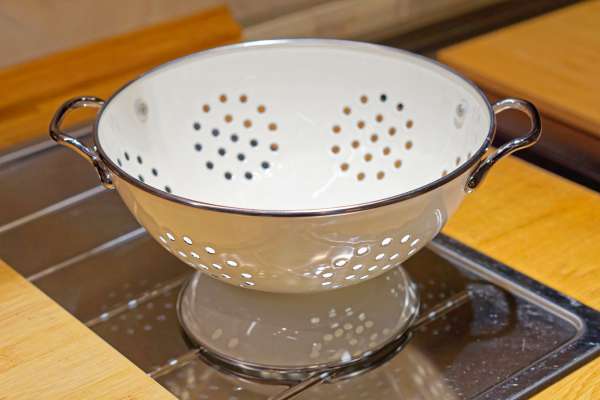
- Perforation Pattern: The size and distribution of holes affect how quickly and effectively the colander drains. Smaller holes are great for fine grains like quinoa, while larger holes work well for pasta and vegetables. A uniform distribution ensures even draining.
- Handles and Grip: Handles are essential for safety and convenience, especially when dealing with hot foods. Look for colanders with ergonomic, heat-resistant handles that provide a secure grip. Some models also include hooks or extended lips for balance over sinks or pots.
- Base Design: A colander with a sturdy base offers stability, preventing it from tipping over while in use. Some colanders come with feet or a ring at the bottom, which keeps the base elevated from the sink, ensuring cleanliness and more efficient draining.
- Ease of Cleaning: Consider how easy the colander is to clean. Metal and silicone colanders often offer the advantage of being dishwasher-safe, whereas plastic ones may require hand washing to avoid warping or staining.
- Storage: If kitchen space is a concern, look for colanders designed for easy storage. Collapsible silicone colanders are ideal for saving space, while some metal or plastic ones can be hung by their handles.
Conclusion
Selecting the right colander for your kitchen is a balance of understanding your cooking habits, storage space, and the types of food you frequently prepare. By considering the size and capacity, material, and specific design features, you can choose a colander that not only meets your culinary needs but also enhances your cooking experience. Whether you opt for a durable metal model, a lightweight plastic version, or a flexible silicone colander, the right choice will provide you with a versatile and indispensable tool in your kitchen for years to come.
